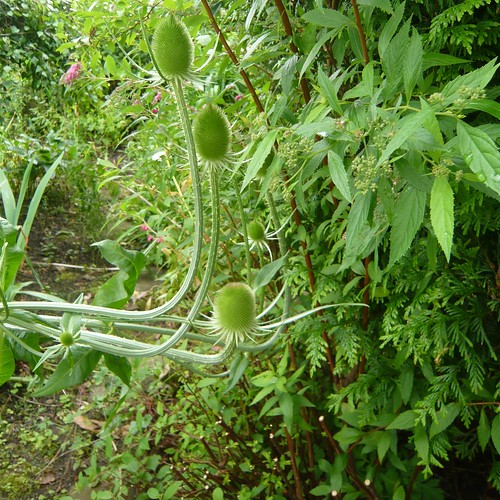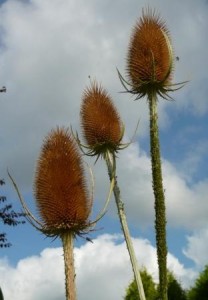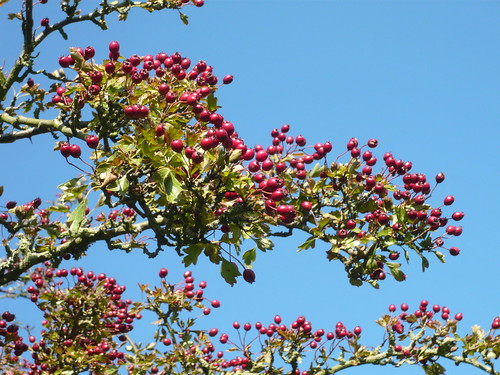Grow Seedheads for Wild Life
What you can do to help feed wild life and your garden birds.
- Leave seed heads on your plants like the Teasel (above) which are great for Goldfinches
- Small mammals like the bigger seeds such as nasturtiums and pulses. Peas and beans can be left on plant not only to collect seeds for next year but as a food for wildlife.
- Berries are looking good at the moment. Enjoy their looks and as they ripen the birds will also enjoy them as dinner. Pyracantha and cotoneaster seem to be favourites at the moment.
- Most importantly plan now to have more seed heads for next year
- Do not be over keen to tidy up. A rough area encourages insects many of which like a feast of seeds. Insects are also more than food for thought.
- Sun flowers are popular so try several varieties from a seed catalogue
- Grasses with plumes and arching flowers look good and taste good
- Echinacea and Amaranthus are prolific seeders
Try reading a specialist book for more ideas Seedheads in the Garden
I have often wondered if birds and insects can tell different flavours of seeds. Humans could tell an Allium from a Sunflower or a Poppy from a Dill seed so may be wild life can too.
Sea Holly or Eryngium giganteum variety Miss Willmotts Ghost (below) will produce seedheads full of nutritious seeds for the birds and insects.
With all that pollination going on I am not surprised.

Hedgerows
- One of the best places to grow seeds is in your hedges.
- Wild life has shelter safety and food on tap in a hedgerow.
- You do not need to have an untidy area of the garden.
Hawthorn and Holly are two typically British hedgerow plants that feed our native wild life.
For a slender and graceful specimen tree that will help feed wild life you could try growing a Mountain Ash, The Rowan or Sorbus aucuparia
For those without the desire to grow there own seeds for the benefit of wildlife then there are many great feed mixes available. RSPB supply in large sacks and there are a host of other retailers.
Please be consistent if you start to feed with bought seed products and wildlife become reliant on your supply.







2 thoughts on “Grow Seedheads for Wild Life”
Comments are closed.